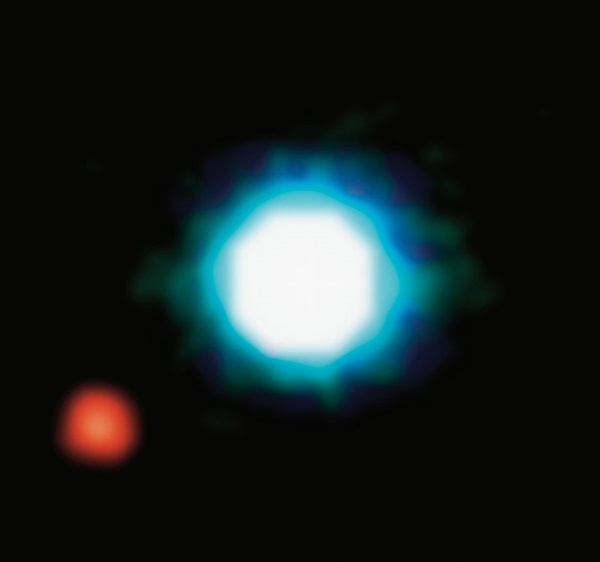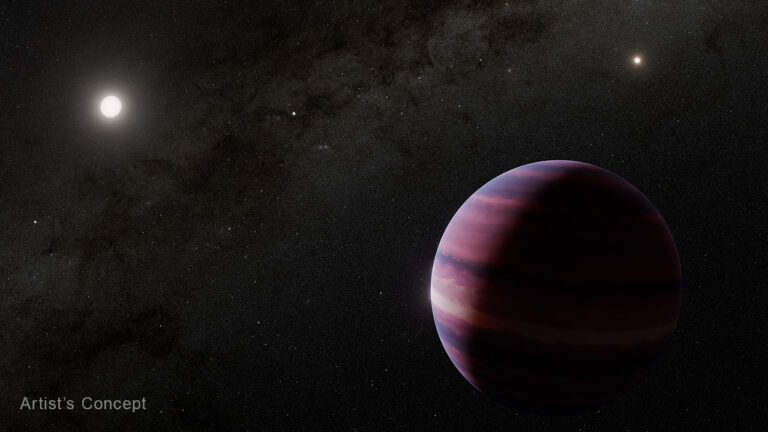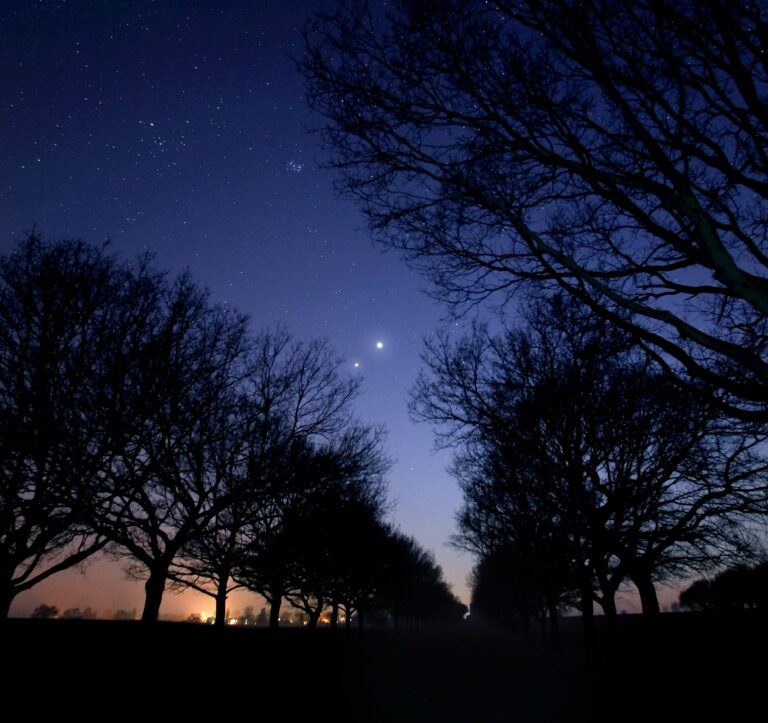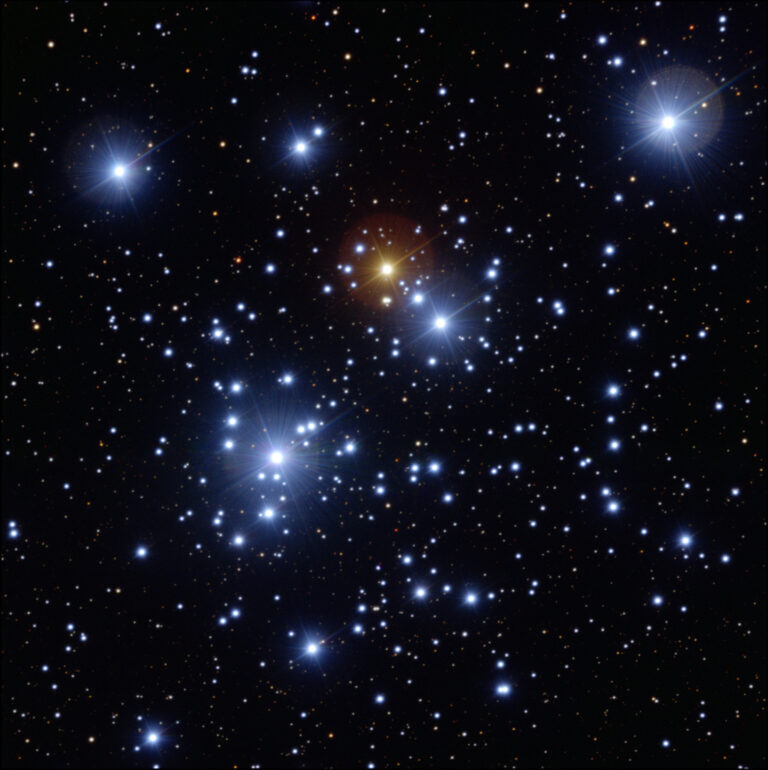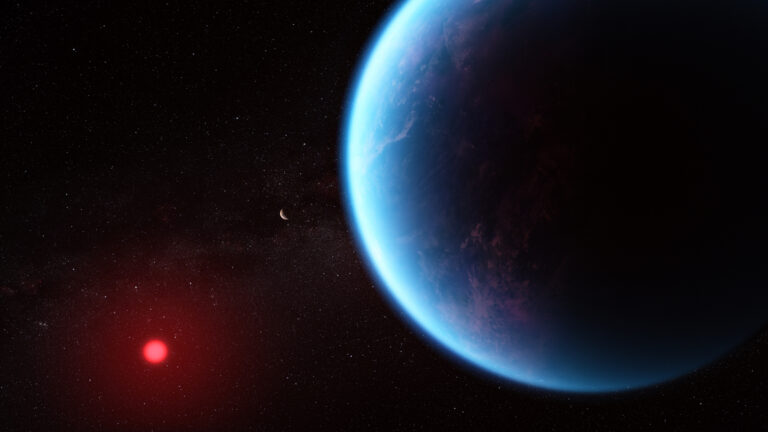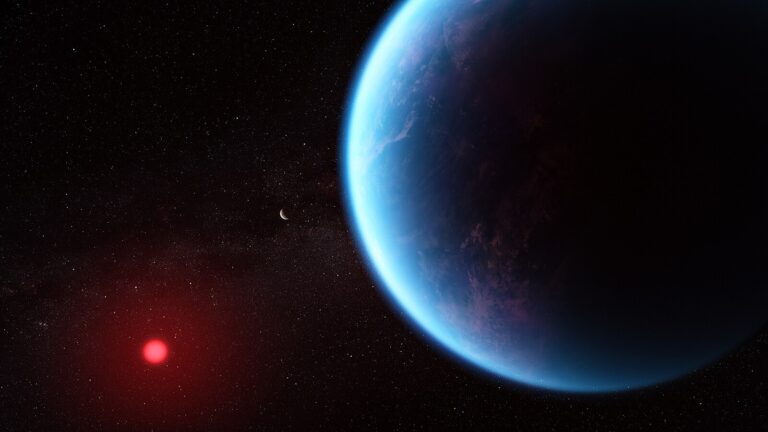Key Takeaways:
In another exoplanetary first, the European Southern Observatory’s Very Large Telescope (VLT) in Chile’s Atacama Desert has captured an image of two worlds orbiting a younger version of the Sun. The system, called TYC 8998-760-1, is located roughly 300 light-years away in the southern constellation Musca. And although it hides two gas giants orbiting a Sun-like star, we don’t have anything quite like these worlds in our own solar system.
The inner planet lies about 160 astronomical units from its host star (where one astronomical unit, or AU, is the average Earth-Sun distance) and is some 14 times the mass of Jupiter. With that amount of heft, the gas giant skirts the border between planet and brown dwarf, which is a type of almost-star. The more distant planet is located about 320 AU from its star and weighs in at about six Jupiter masses.
The system’s star, meanwhile, has about the same mass as our own Sun (give or take a few percent due to uncertainties). However, it’s only 17 million years old — which makes our roughly 4.5-billion-year-old Sun about 265 times older.
“This discovery is a snapshot of an environment that is very similar to our solar system, but at a much earlier stage of its evolution,” lead author Alexander Bohn, a Ph.D. student at Leiden University in the Netherlands, said in a statement released by ESO.

Would you like to learn more about exoplanets and other solar systems? Check out our free downloadable eBook: Our search for extrasolar planets.
The image of the two-planet system was published July 22 in The Astrophysical Journal Letters.
Capturing a rare planetary snapshot
While astronomers know of thousands of exoplanets, they’ve found the vast majority of them by tracking the indirect effects that the worlds exert on their host stars, like causing them to wobble or temporarily blocking their light. Capturing a direct image of an exoplanet is much more challenging, as the glare of the star tends to overpower the faint light reflecting off the planet.
Since the first direct image of an exoplanet was captured in 2004 (also by the VLT), less than 50 exoplanets have been directly imaged, according to NASA’s Exoplanet Archive. And only two other systems with multiple planets have been definitively seen, though neither of those have Sun-like host stars.
To image TYC 8998-760-1, the international team of researchers used an instrument called the Spectro-Polarimetric High-contrast Exoplanet REsearch (SPHERE), which is specifically designed for the VLT so it can better hunt for exoplanets. Though it’s a ground-based instrument, it uses state-of-the-art adaptive optics to correct for image distortion caused by Earth’s turbulent atmosphere, and a coronagraph to help block excess light from the target star.
Bohn and his colleagues first spotted the larger, innermost planet in this system in 2017. But it wasn’t until 2019 that they confirmed it with more data. Further follow-up observations revealed another surprise, though — an object that looked like another planet, but was smaller, cooler, and much farther from its host star.
It takes two worlds to tango
To confirm their newly spotted, second pinprick of light was actually a planet and not a background star, the team conducted more observations in February 2020. In the year since their last observations, the positions of the background stars had shifted ever so slightly. But when the researchers looked again, the two planets and their host star had remained in lockstep with each other, indicating they’re part of the same system.
Such a confirmation is a tribute to SPHERE’s extreme astrometric precision — or ability to measure the precise locations and motions of celestial objects. “I do not think that any other instrument that is currently available in the Southern Hemisphere would have enabled this detection with a baseline of only one year,” Bohn told Astronomy in an email.
Most intriguing to Bohn, however, is how wildly far these planets are from their host star. They’re “so much farther out than any known solar system planet,” he added, despite the fact that their star is so similar to our Sun. (For comparison, our most distant known planet, Neptune, is an average of 30 AU from the Sun. The inner planet of TYC 8998-760-1 sits more than five times farther out.)
Moving forward, Bohn wants to know if these planets started their lives that far from their host star, or rather formed closer in before later moving out. But nonetheless, the image, he says, is photographic proof “that planetary systems can look very different from our own solar system.”
[Correction: This story has been updated to reflect that the innermost planet of TYC 8998-760-1 sits more than five times farther from its host star than Neptune is from the Sun, not 10 times like originally stated.]


